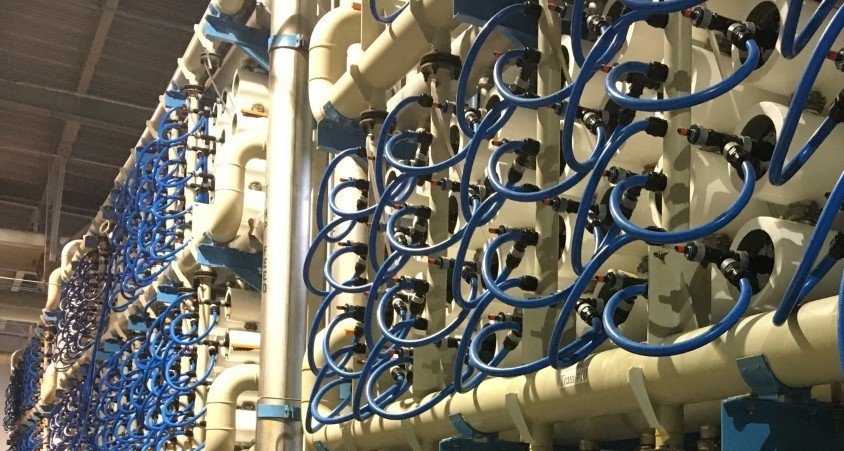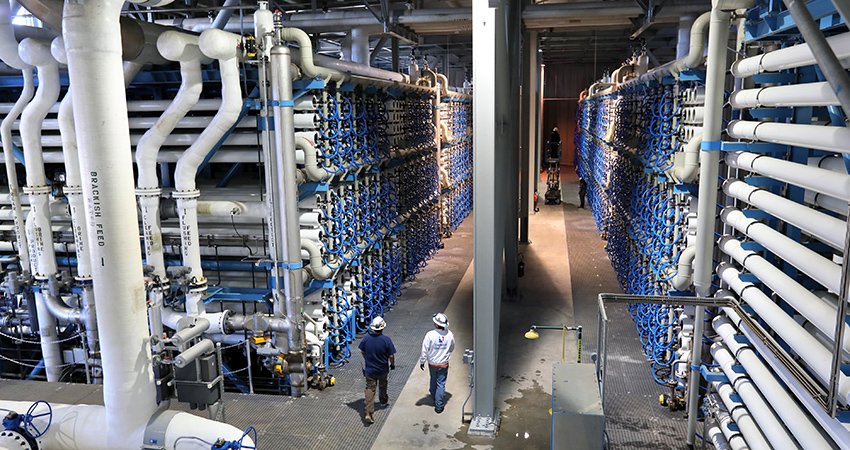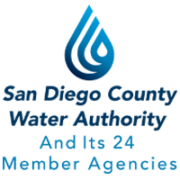The U.S. Environmental Protection Agency has awarded a $170 million low-interest loan to reduce financing costs for environmental upgrades that enhance the Claude “Bud” Lewis Carlsbad Desalination Plant. U.S. Rep. Mike Levin, who represents coastal communities including Carlsbad, helped secure the funds that will save ratepayers up to $54 million compared to alternate financing strategies.
“As we continue to confront increasingly frequent and intense droughts, today’s announcement is an exciting step in our efforts to provide sustainable, reliable water supplies for San Diego County,” said Rep. Mike Levin. “This low-interest federal loan will not only allow the Carlsbad Desalination Plant to improve its efficiency and environmental practices but will also save local water ratepayers tens of millions of dollars. I will never stop fighting to improve our region’s water security at the most affordable price for ratepayers.”
EPA financing reduces project costs, saves ratepayers
The loan, from the federal Water Infrastructure Finance and Innovation Act (WIFIA), will help Poseidon Resources (Channelside) LP continue to provide local, sustainable, drought-proof water to the San Diego County Water Authority and its 24 member agencies while reducing costs of the current intake modification project.
“Saving ratepayers money while enhancing environmental protections is solid gold,” said Water Authority Board Chair Mel Katz. “The team effort between Poseidon, the Water Authority and Congressman Levin illustrates our commitment to find cost savings wherever we can while continuing to provide safe and reliable water supplies for our region.”

The San Diego County Water Authority added desalinated seawater to its supply portfolio in 2015 with the start of commercial operations at the nation’s largest seawater desalination plant. Photo: San Diego County Water Authority
100 billion gallons of drinking water
The Carlsbad Desalination Plant is the largest, most technologically advanced and energy-efficient desalination plant in the nation, and it has produced more than 100 billion gallons of drinking water for San Diego County since operations began in December 2015.
“Since the beginning, Poseidon Resources’ mission has been to provide high-quality drinking water and a long-term sustainable solution for San Diego County while protecting ratepayers,” said Sachin Chawla, president of Poseidon Resources. “This infusion of low-interest capital and close partnerships with U.S. EPA and the Water Authority will further support modernizing Carlsbad’s Desalination Plant for future generations.”
Reverse osmosis

Reverse osmosis is the heart of the Carlsbad Desalination Plant. During this process, dissolved salt and other minerals are separated from the water, making it fit for consumption. This reverse osmosis building contains more than 2,000 pressure vessels housing more than 16,000 reverse osmosis membranes. Photo: San Diego County Water Authority
New intake and discharge facilities
The new intake and discharge facilities at the Carlsbad Desalination Plant will ensure the plant continues to meet California’s stringent Ocean Plan standards for protecting marine life. Work started in January 2023 and the new facilities are anticipated to be operational by December 2024. Except for a planned plant outage required near the end of the project to connect the new facilities to the existing intake system, construction is not expected to impact water production.
Protecting marine habitats
“Diversifying and stretching precious water supplies is essential in the water scarce West,” said EPA Assistant Administrator for Water Radhika Fox. “Our WIFIA loan to Poseidon Resources in San Diego County will be used for both upgrading the drinking water desalination plant to help address water shortages, stretch precious water supplies, and protect critical marine habitats in the San Diego Bay.”
WIFIA program and water infrastructure
Established by the Water Infrastructure Finance and Innovation Act of 2014, the WIFIA program is a federal loan and guarantee program administered by EPA. The WIFIA program’s aim is to accelerate investment in the nation’s water infrastructure by providing long-term, low-cost supplemental credit assistance for regionally and nationally significant projects.
The WIFIA program has an active pipeline of pending applications for projects that will result in billions of dollars in water infrastructure investment and thousands of jobs. With this WIFIA loan closing, EPA has announced 101 WIFIA loans that are providing $17 billion in credit assistance to help finance $37 billion for water infrastructure while creating 125,000 jobs and saving ratepayers over $5 billion.
Visionary problem-solving






